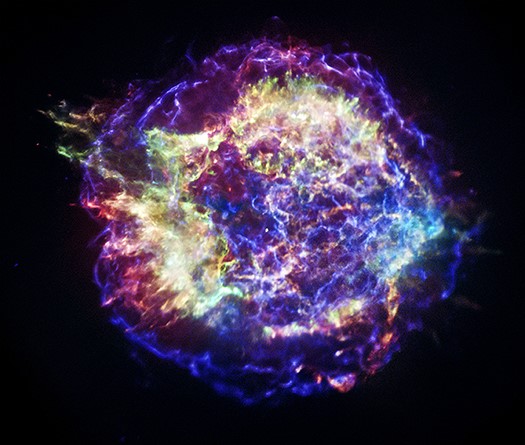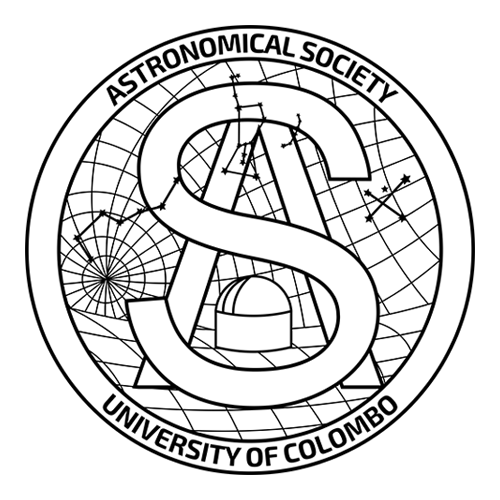There is nothing permanent in this universe. When the time comes, everyone and everything in this universe must end their role in this drama. This transient phenomenon is even common for massive stars too. Stars with massive weight (8 – 25 times bigger than our Sun) will violently explode during their last evolutionary stages. This phenomenon is known as Supernova.
The name “Supernova” came up with the Latin word “nova” and it also defines another type of exploding star. Some characteristics of this supernova resemble a nova-like tremendous, rapid brightening lasting for a few weeks, followed by a slow dimming. What was the first supernova???
The first time this phenomenon discovered

(Image credit: https://www.jpl.nasa.gov/spaceimages/details.php?id=pia14872 )
That question is quite complicated to answer because we do not know what star was the first to explode. But we can look at the first recorded supernova which is SN-185. In 185 A.D; someone in China looked up in the sky and saw a new star. It sparkled and did not move. So, it could not be a comet. This strange star stayed in the sky for eight months and then disappeared forever. It has been recorded in the book of the Later Han, which described the history of China from 25 to 220 A.D.
How it happens

(Image credit: https://thecosmiccompanion.medium.com/supernova-debris-leaves-clues-about-ancient-stars-6af1a16af6d3 )
The Supernova occurs with some changes in the core or center of a star. This happens in two different ways, TYPE I and TYPE II, both resulting in a supernova.
The TYPE I of supernovae happens in binary star systems. That is a combination of two stars. One of them is a white dwarf, the hot, dense remnants of a long-dead star like our sun. The second one can be any other type of star, like a red giant or even a white dwarf. What matters here is that they are close enough to each other so that the white dwarf can steal matter from its partner.

(Image credit: https://www.nasa.gov/mission_pages/chandra/images/chandra-reveals-the-elementary-nature-of-cassiopeia-a.html )
The second type of supernovae occurs at the end of a single star’s lifetime. In the process of releasing energy as photons, stars convert hydrogen into helium through fusion at their core. This light pressure pushes against the force of gravity that tries to pull the star in on itself. Our sun does not have enough mass to support fusion reactions with elements beyond hydrogen or helium. Hence once all the hydrogens are used up, fusion reactions stop, and the sun becomes a white dwarf and starts cooling down.
But a star with 8 – 25 times the mass of the sun can melt heavier elements at its core. When it runs out of hydrogen, it switches to helium, and then carbon, neon, etc. and then it reaches iron. However, the fusion reaction takes more energy than it produces. Eventually, the core cannot bear its gravitational force. The outer layers of the star collapse inward in a fraction of a second, and then it ends up as a TYPE II supernova.
Historical Supernovae

(Image link: https://hubblesite.org/contents/media/images/2005/37/1823-Image.html )
Historically, there are only seven supernovae recorded before the 17th century. Among them, the supernova that happened in 1054 AD was the most famous one which was recorded by Chinese and Korean observers. According to rock paintings discovered in Arizona and New Mexico, it may also have been seen by Southwestern American Indians. It was seen in one of the horns of the constellation Taurus. The remnants of this explosion are visible today as the Crab Nebula, which consists of glowing gases flying outward in an irregular way and a rapidly spinning pulsating neutron star, called a pulsar, in the center.
Other conspicuous supernovae are known to have been discovered from Earth in 185, 393, 1006, 1181, 1572, and 1604.
Why Do Scientists Study Supernovae?
Even though this is the catastrophic death of stars, this phenomenon reveals so many important things about space.
Scientists have found out we live in an expanding universe, because of the behavior of supernovae. Not only that scientists also have determined supernovae act a major role in distributing elements throughout the universe. When the stars explode, they shoot elements and debris into space, that is where almost every element on Earth have come from.
How Do NASA Scientists Look for Supernovae?
NASA scientists use different kinds of telescopes to observe supernovae. Some of them use visible light emitting from the explosions while others use X-Ray and Gamma Rays to discover supernovae.
How quickly does a supernova happen?

(Image credit: https://www.nasa.gov/audience/forstudents/5-8/features/nasa-knows/what-is-a-supernova.html )
The outer edges of the core collapse inward at 70,000 meters per second, about 23% of the speed of light. In just a quarter of a second, infalling material bounces off the iron core of the star, creating a shockwave of matter propagating outward. This shockwave can take a couple of hours to reach the surface. In short, it would take a few million years for a star to die, less than a quarter of a second for its core to collapse, a few hours for the shockwave to reach the surface of the star, a few months to brighten, and then just a few years to fade away.
-Ravindu Lakshan-
References:
[1] Sarah Zielinski, SEPTEMBER 6, 2011, <https://bit.ly/3IlIhOa>
[2] Fraser Cain, APRIL 10, 2015, <https://bit.ly/3bXI8Vg>
[3] Fraser Cain, MARCH 15, 2016, <https://bit.ly/3yYmMjL>
[4] Sandra May, National Aeronautics and Space Administration, July 16, 2018, <https://go.nasa.gov/3yQyahw>

